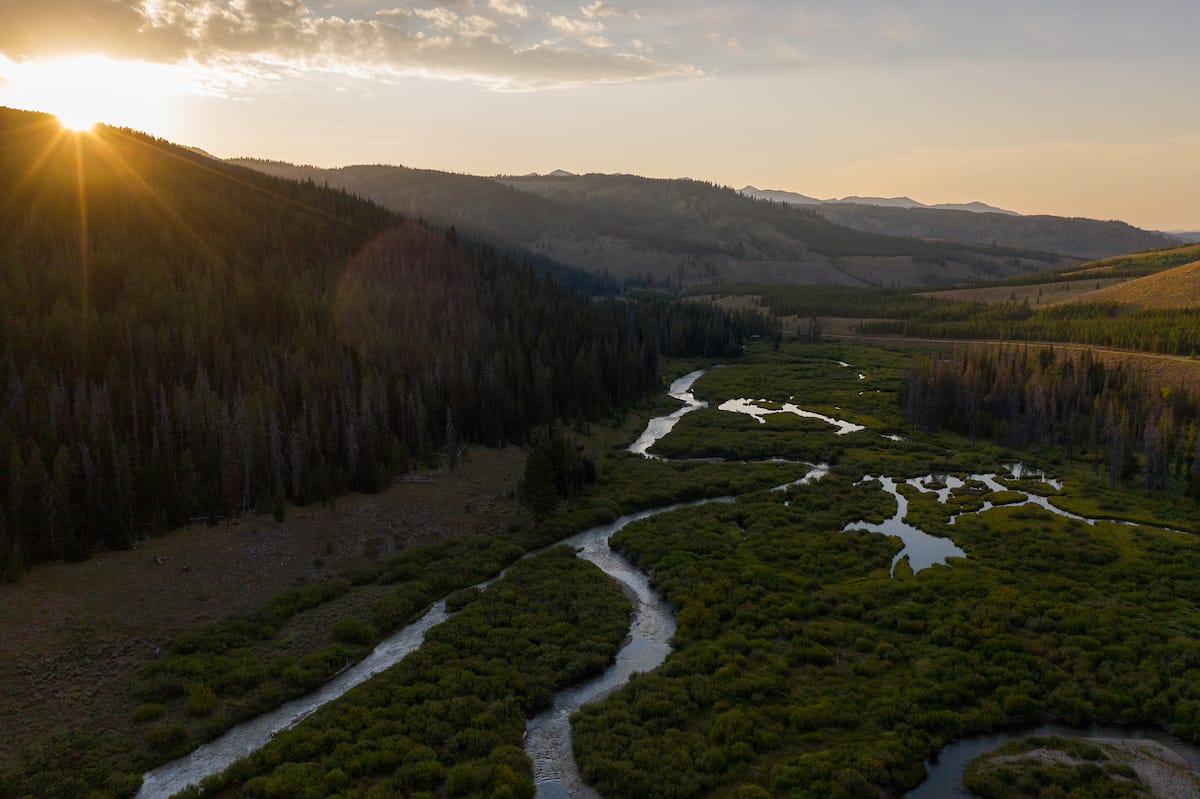To me, there is no better sound to fall asleep to than that of moving water. It’s the white noise itself, but I also think it’s the knowing that water is nearby. When I have this luxury, it usually means that I just went fishing or am about to go fishing, or both, which is a most pleasant way to end a day. I find that I drift into slumber more quickly and deeper than in most other environments and it’s not uncommon for the water or fishing to make its way into my dreams too. For anyone who likes fishing whenever they’re awake, fishing while asleep is a perfect complement.
Pre-runoff trout fishing in the Rockies is an exercise in timing, especially when trying to catch fish in a certain way. Everything is more brief in spring: sunlight, warm weather windows, hatch durations, feeding times, favorable water flows and conditions, et cetera. And the season itself is sleepy, encourages late starts, extra insulation and, like an afternoon nap, comes and goes quickly, if you’re able to catch it at all. If you weren’t there to meet it, then it may as well never have happened.
Uncertain fishing conditions
I’d recently relocated to southwest Montana and in doing so, the Yellowstone became my home river. It was daunting to get to know but I felt that I couldn’t go wrong in terms of where I started; it was all going to be good.
When I arrived, it was mid-April and the weather was unsettled and uncertain, still deciding if it was winter or spring. I don’t mind fishing in cool weather or in the rain but the constantly changing conditions made it hard for me to make any connections between where I was fishing and the results I had. There was talk of the Mother’s Day caddis hatch but debate on whether it would happen before the river blew out for runoff. Recent reports were as mixed as the weather, but there was a consensus that fish could indeed be caught if in the right place at the right time, of course.
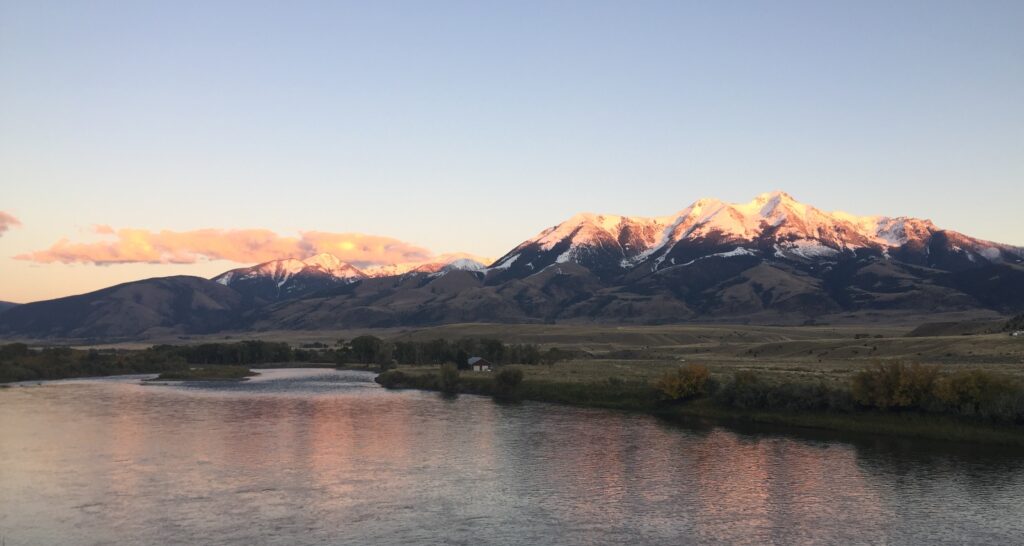
One cloudy Saturday afternoon late in the month, I made my way down a bumpy, one-lane dirt road to a run on the Yellowstone where a small tributary entered. Approaching from downstream, it looked better and better as I got closer. The stream that entered clearly had a big runoff of its own, for at the head of the run was a great pile of gravel, basketball-sized boulders, and even a wheelbarrow-sized one or two. There, the two flows met, and a long riffle and seam arced out into the middle of the river and curved downstream.
I followed the seam downstream with my eyes until it disappeared then gazed up, into the Absarokas to the east. They tore across the horizon line, snow still covering their top halves. Below the snowline, the various greens of pine, fir and spruce trees mixed and cascaded into the valley like a long dress falling to the floor. Back on my level, the river was low, as evidenced by the distance between the high-water mark and the current level, but I knew it wouldn’t be long until the snow I saw in the mountains flowed exactly where I stood.
Slowly, I neared the riffle, waiting for a rise. It had to hold fish. I looked down at the small, tan X-Caddis that I had tied on, as if reminding myself that I could make a cast any time. But something stopped me. I had waited all winter to see a trout take a dry fly; what was a few more minutes? So instead of casting, I leaned my rod against a willow tree, and sat down on the bank. I knew that if I waited long enough, eventually I’d see a fish rise.
Project Spotlight: Mill Creek
The Yellowstone River is not immune to the threats facing coldwater fisheries throughout the arid west like warming water temperatures, increasing water use demands, uncertain snowpack and instream habitat degradation from historic land use. These threats are not insurmountable obstacles, but actions as simple as adding wood to a stream or removing an earthen berm that confined a creek and dried out the floodplain meadow, can make a big difference. This is exactly what is happening on Mill Creek, a large tributary to the Yellowstone in the aptly named Paradise Valley, where TU is using Bipartisan Infrastructure Law funding to work with the Custer Gallatin National Forest, Montana Fish, Wildlife & Parks and a local landowner to implement simple solutions to these complex issues.
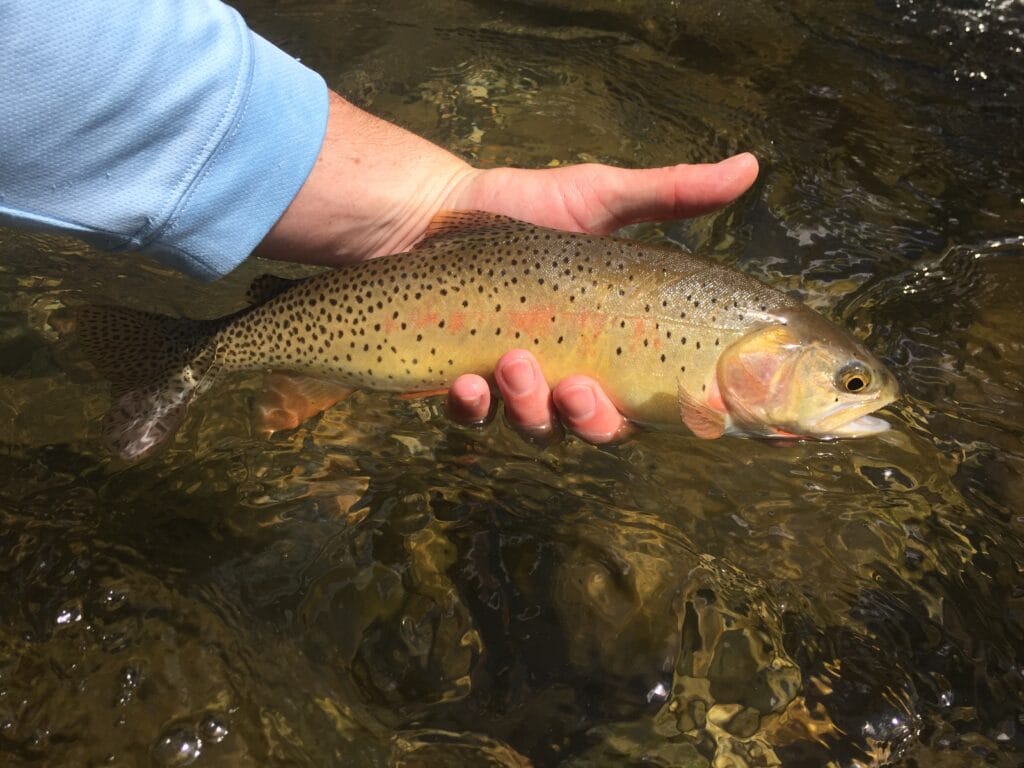
Lulled to near sleep
The river trickled through the riffle in a low murmur. Combined with the melodies of spring songbirds and a slight breeze stirring the trees, the sound was entirely intoxicating. I pulled my hood up, leaned back, and closed my eyes. Instantaneously, I drifted into a shallow doze. It was one of those sleeps that rendered me physically immovable, but I was still vaguely aware of my surroundings. I could make out the sounds around me – the river flowing by, the birds chirping, the trees rustling – but was more of an observer than active participant in the scene. The noises melded into one, consistent and hypnotic symphony. My head bobbed as I tried to stay awake.
Finally, a particular noise awoke me fully. Specifically, it was a change in the sound that had put me to sleep; an inconsistency in the white noise. Peeling my eyes open, I regained focus on the riffle. In the middle of the seam, where minutes ago there was nothing, two distinct fish rose repeatedly. Accompanying each rise was a unique report, as if different-sized stones were being tossed into the river at varying angles. The splashy takes told me that they were feeding on caddis. Immediately, I was on my feet.
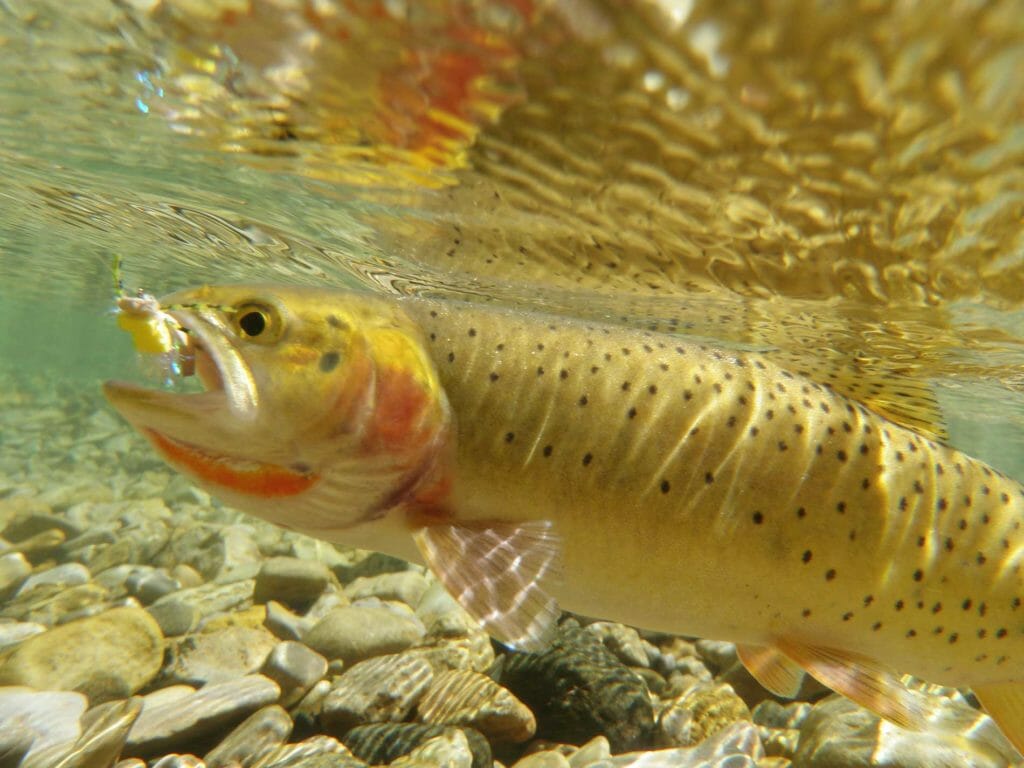
I kept my distance from the water while pulling line off my reel. I had a brief thought to put floatant on my fly and double check the size but it was too late, my motivation and momentum to catch the first dry fly fish of the season was too high. The trout was as eager as I was and took my caddis imitation on the first cast.
It shot into the middle of the river then leapt, revealing its green, pink and silver flanks. It landed, and we remained connected. As the rainbow tired, I could hear the second fish rising upstream, each take louder and more reckless than the last. I didn’t dare look, for fear of either losing the one I had hooked or ceasing the second fish to rise, as if it could sense my intentions. When the fish was close, I guided it into my net and unhooked the fly. It was a product of its environment – wild and rugged, imperfect but pure. Its sharp fins matched the angled peaks in the distance. Submerging it while still in the net, the fish righted itself in the current. Then I removed the net from under it and it vanished. Another wild rise upstream caught my eye.
My fly had barely drifted before the second rainbow took it in a swirl. Straight away I could tell it was bigger than the first, as it ran upstream into the head of the run. I started to follow but the fish turned around and swam directly at me. I stripped line quickly to retain tension, but it was fruitless. The fish passed me on its way downstream and, somewhere along the way, the hook came out. Stupefied, I looked around frantically for another riser. But the riffle was as empty as when I arrived, and only the river’s white noise remained.
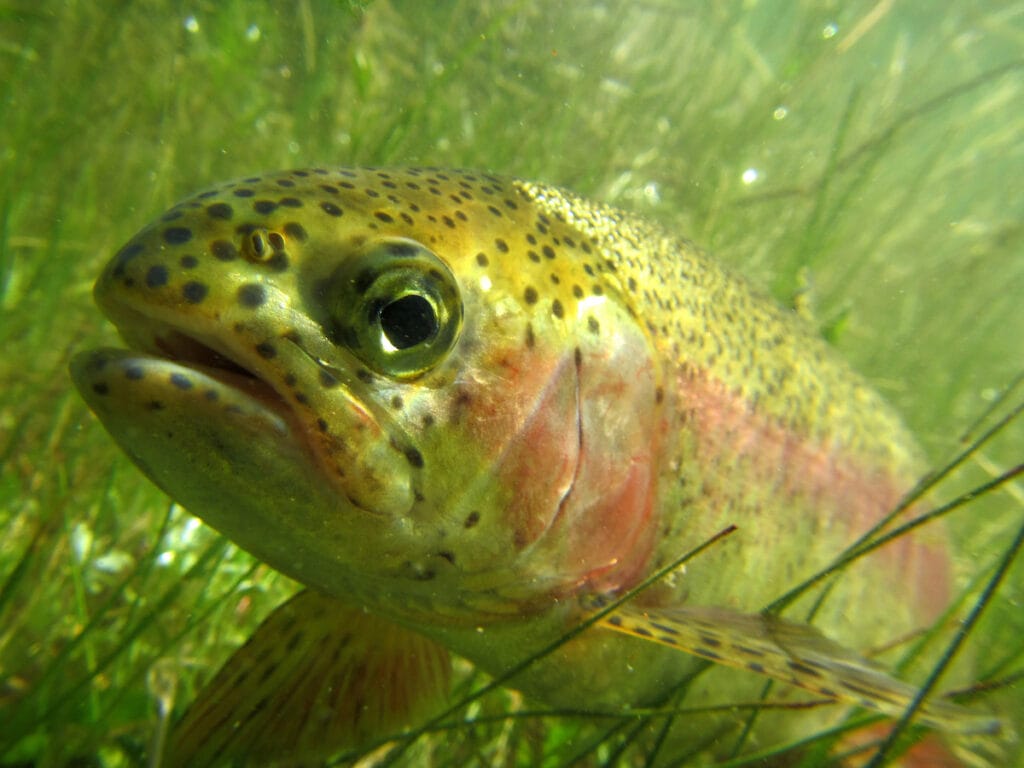
I took to the bank, thinking that another fish would start rising if I waited a while. A few minutes passed while I scanned the water, but no fish showed. A breeze crossed the river towards me, dimpling the surface as it came, and I could feel the temperature dropping. I pulled on my hood, acknowledging that the window had closed for the day.
Back at the house, I burrowed into the couch under a blanket, listening to the trees bend in the wind outside, another white noise to put me to sleep. I was cozy, comfortable and had nowhere to be nor anything to do – ideal napping conditions. But, try as I did to fall asleep, I couldn’t. My mind kept replaying clips of rising fish, and with each rise, I was less and less tired.
Finally, I gave up, and made my way to the fly tying desk. I figured I could use a few more caddis if I was going to catch the window the next day.




